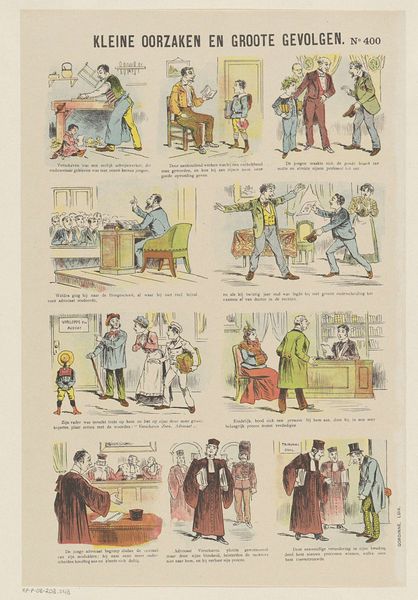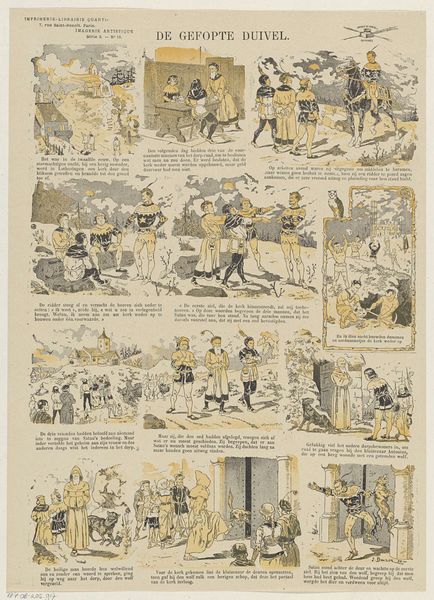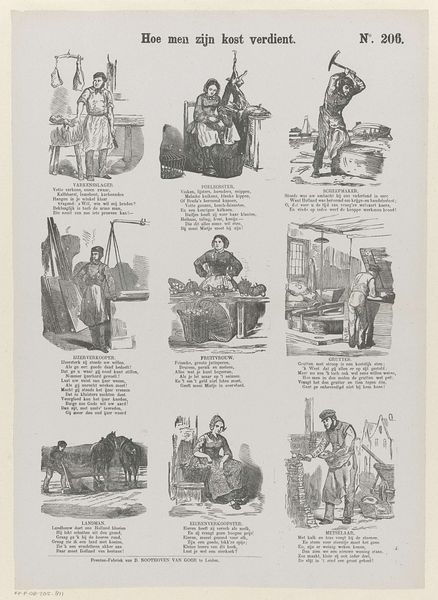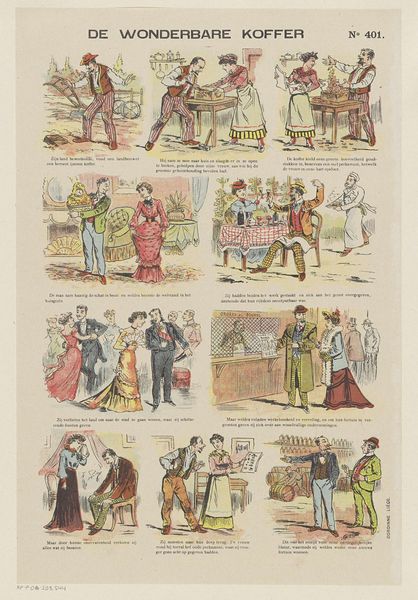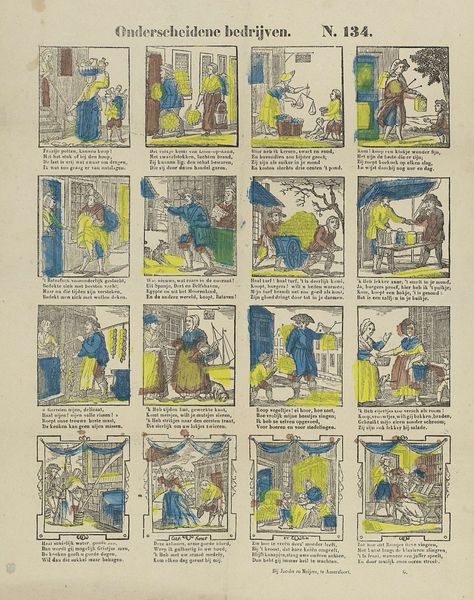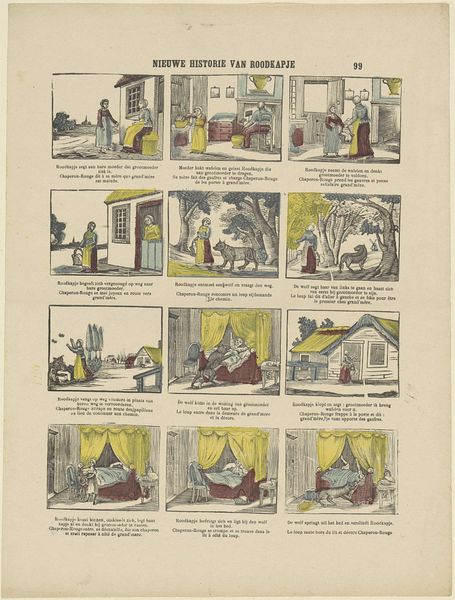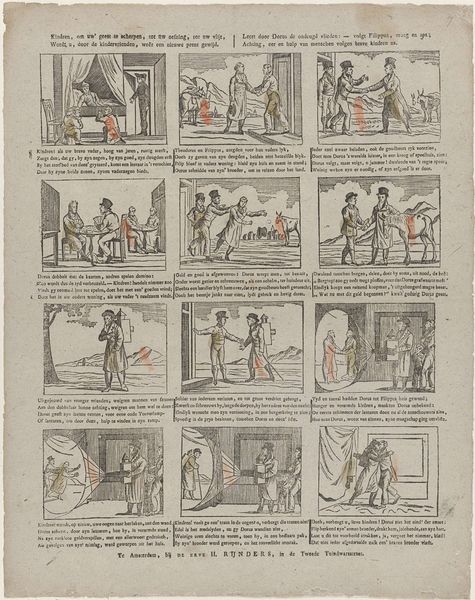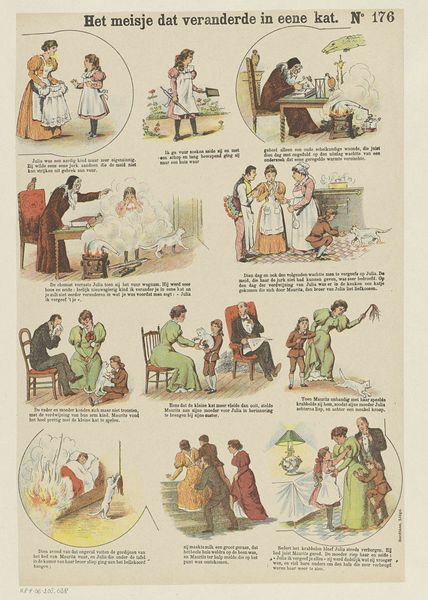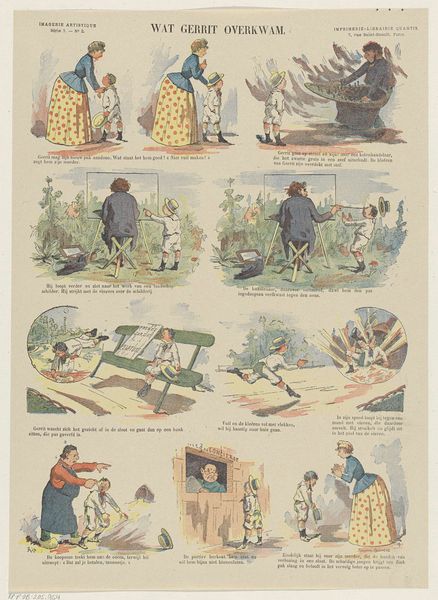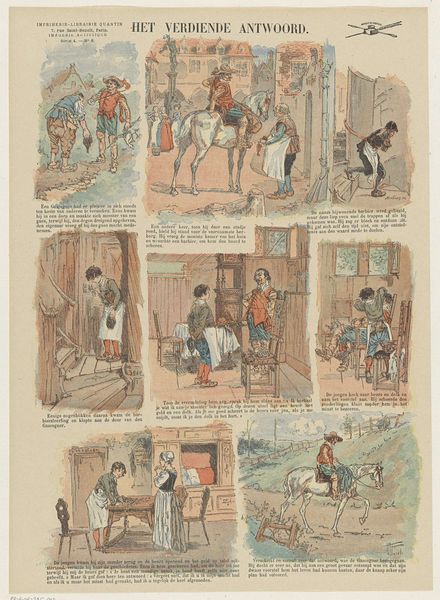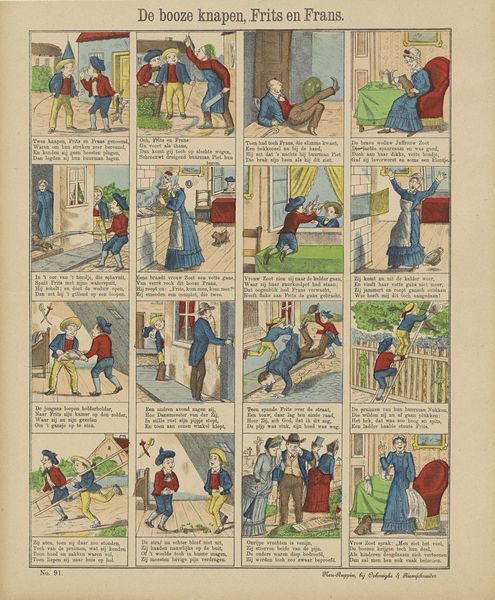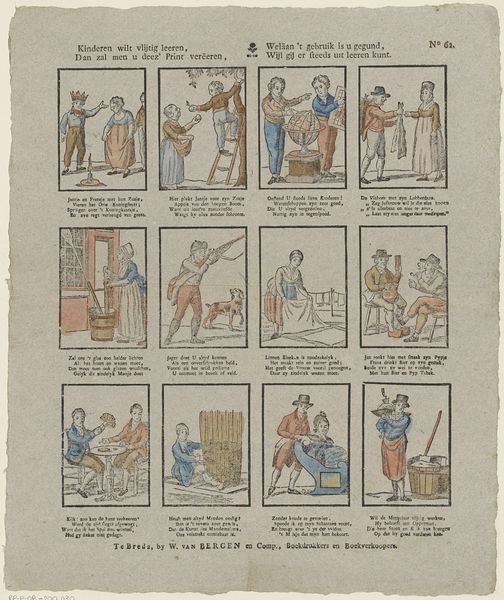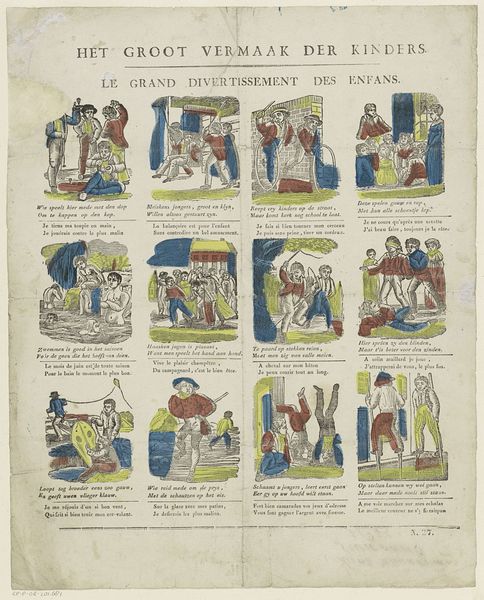
print, etching
#
comic strip sketch
#
narrative illustration
#
narrative-art
#
comic strip
# print
#
etching
#
old engraving style
#
traditional media
#
personal sketchbook
#
sketchwork
#
comic
#
sketchbook drawing
#
genre-painting
#
storyboard and sketchbook work
#
sketchbook art
Dimensions: height 367 mm, width 265 mm
Copyright: Rijks Museum: Open Domain
Curator: Ah, here's "De gastvrijheid", or "The Hospitality", an etching dating from around 1876 to 1890, by the artist Michelet. What springs to mind when you look at it? Editor: Comic book panels! An antique precursor to them, at least. Each scene has that delightful aged quality, printed in a sepia wash that feels both historic and gently amusing. Curator: It certainly uses the conventions of a comic, narrating a story through sequentially arranged scenes. What I find compelling is how the medium, the etching, itself speaks to a time of mass production. Editor: Absolutely. The print medium, disseminated widely, suggests a narrative intended for broader consumption, doesn’t it? Hospitality as something potentially accessible to anyone, any reader of this…proto-comic. But the act itself in the images... Heracles doesn't look especially hospitatable. Curator: That's what fascinates me – it's called "The Hospitality", and yet...the story plays with expectations. In this rendering, the act of kindness morphs, degrades into this escalating series of unfortunate events until... well, without spoiling the punchline, it's a subversion. The style of Michelet reminds me of Honoré Daumier's social satire, especially his lithographs that exposed the bourgeois elite of France. It questions the notion of “virtue.” Editor: Considering the date – between 1876 and 1890 – one can’t help thinking about the shifting landscape of labour in that era. What materials would have been available and at what price points? We may be witnessing the material limits and labour concerns expressed even through Michelet's "joke". Curator: Indeed. And think of the social context. These prints would have been affordable. Were they, then, acting as a commentary on what real hospitality meant for the working class? Was it a bitter joke about expectations never to be realized? I like that the choice of making these points via images makes them so directly and effectively. Editor: A potent idea, isn’t it? Something printed en masse and consumed just as widely has the means to speak quite persuasively. Curator: Ultimately, this etching leaves me contemplating the space between idealized virtues and the messy reality of human interaction. Editor: And for me, it’s about the art form – its inherent materiality, the physical act of its creation – and its silent testimony to social circumstance.
Comments
No comments
Be the first to comment and join the conversation on the ultimate creative platform.
